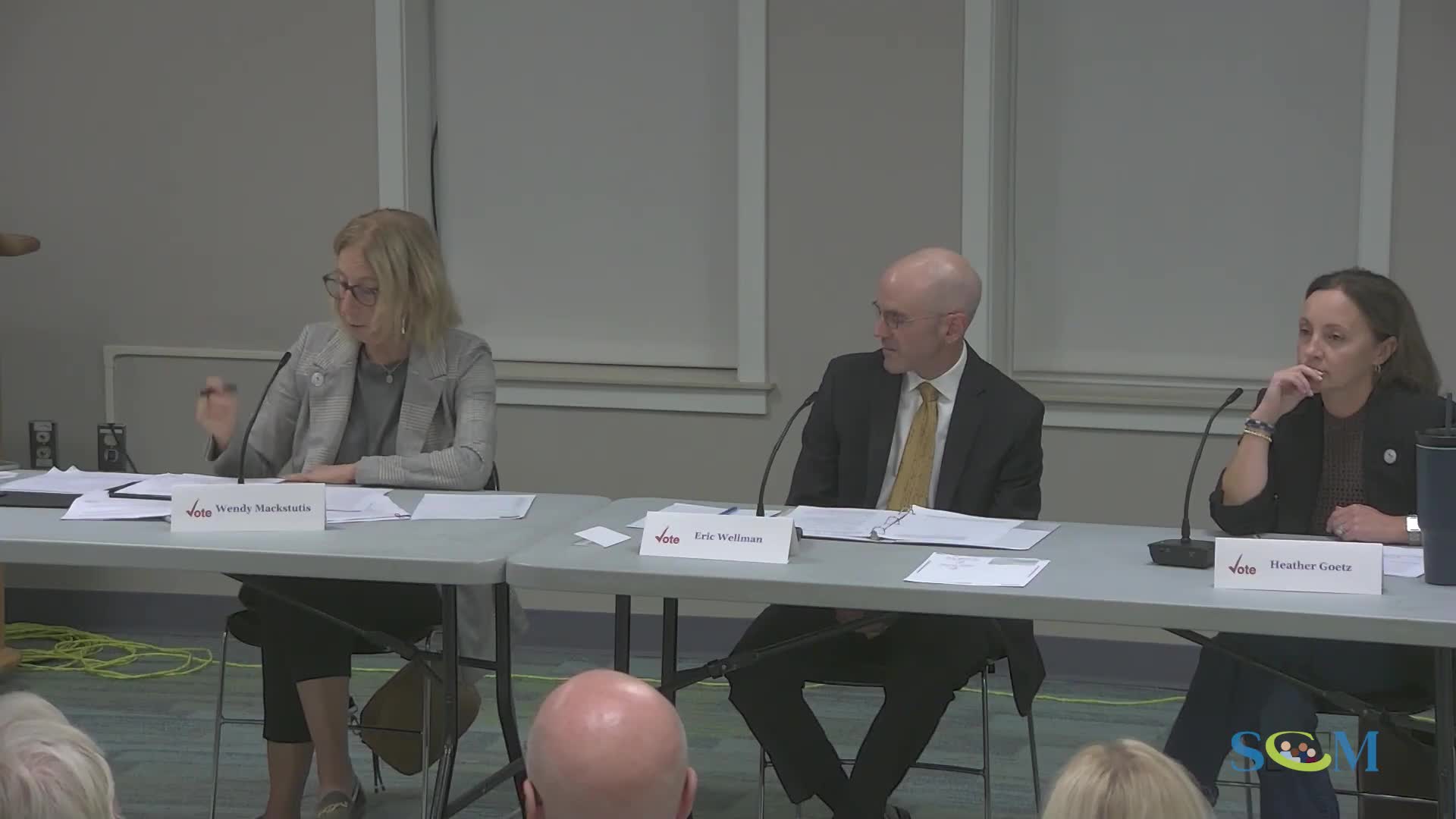Candidates defend Simsbury schools investment and point to long‑term fiscal tradeoffs
October 07, 2025 | Simsbury Center, Capitol County, Connecticut
This article was created by AI summarizing key points discussed. AI makes mistakes, so for full details and context, please refer to the video of the full meeting. Please report any errors so we can fix them. Report an error »

Simsbury’s candidates at the Oct. 18 chamber forum agreed that local schools are a core community asset but noted tradeoffs tied to capital spending and long‑term operating costs.
Why it matters: Education consumes the majority of property tax dollars in many Connecticut towns. Voters often base local decisions and property values on school quality, but school construction and operating costs can raise the tax burden.
What candidates said: Wendy Max Dudas, Simsbury’s first selectman and the Democratic candidate, described schools as a major reason families move to town and defended the decision to build the new Latimer Lane School, which she said cost “40 plus million dollars.” She said the town used bonding and ARPA funds and emphasized the need for tri‑board (board of selectmen, board of finance, board of education) coordination on capital requests.
Heather Goetz, Republican candidate and selectman, said the Board of Education’s fixed costs make large portions of the budget hard to change — “80% of their budget is fixed with contractual agreements” — and urged shared services where possible. She called the Pathways program an investment to bring some special‑education students back to town and to generate revenue by accepting students from other towns in the future.
Eric Wellman, independent candidate and former first selectman, supported school investment and raised an energy‑planning point: he said the rebuilt Latimer Lane School missed the chance to be made “solar ready,” which could have reduced long‑term operating costs.
Details and fiscal context: Candidates pointed to recent budget management achievements and said boards have worked to hold line items down in recent years, sometimes by avoiding new positions. They also noted state mandates and contractual obligations constrain school budgeting.
Next steps and implications: Candidates urged careful fiscal impact analyses before approving new housing or capital projects that might increase school enrollments. They recommended coordinating capital planning and energy readiness for future school construction to limit lifetime operating costs.
Why it matters: Education consumes the majority of property tax dollars in many Connecticut towns. Voters often base local decisions and property values on school quality, but school construction and operating costs can raise the tax burden.
What candidates said: Wendy Max Dudas, Simsbury’s first selectman and the Democratic candidate, described schools as a major reason families move to town and defended the decision to build the new Latimer Lane School, which she said cost “40 plus million dollars.” She said the town used bonding and ARPA funds and emphasized the need for tri‑board (board of selectmen, board of finance, board of education) coordination on capital requests.
Heather Goetz, Republican candidate and selectman, said the Board of Education’s fixed costs make large portions of the budget hard to change — “80% of their budget is fixed with contractual agreements” — and urged shared services where possible. She called the Pathways program an investment to bring some special‑education students back to town and to generate revenue by accepting students from other towns in the future.
Eric Wellman, independent candidate and former first selectman, supported school investment and raised an energy‑planning point: he said the rebuilt Latimer Lane School missed the chance to be made “solar ready,” which could have reduced long‑term operating costs.
Details and fiscal context: Candidates pointed to recent budget management achievements and said boards have worked to hold line items down in recent years, sometimes by avoiding new positions. They also noted state mandates and contractual obligations constrain school budgeting.
Next steps and implications: Candidates urged careful fiscal impact analyses before approving new housing or capital projects that might increase school enrollments. They recommended coordinating capital planning and energy readiness for future school construction to limit lifetime operating costs.
View full meeting
This article is based on a recent meeting—watch the full video and explore the complete transcript for deeper insights into the discussion.
View full meeting
